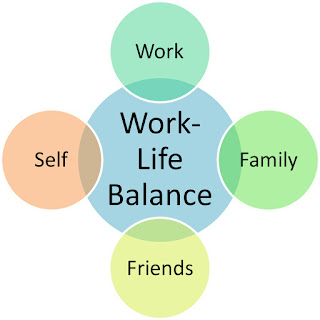A lot of people have noticed that there is something
extraordinary happening.
More and more people are breaking the chains of fear that kept us locked into the 9-5 system.
Last year my wife took a “work from home” job and now I see
the world from a different perspective. More and more people are breaking the chains of fear that kept us locked into the 9-5 system.
The change I have seen in her is a more relaxed and happier person and a more productive employee.
So employment is going through changes and many of us are unaware of that.
Why is the employment world changing?
In this post, I'll point out some of the reasons that lead me to believe why this change in inevitable.
1. No one can stand the 9-5 employment model any longer.
We are reaching our limits of how much pressure we can and will take.
People working with big corporations can't stand their jobs.
They want out.
They want to drop everything and “move to the country” so to
speak. Take a look on how many people are willing to risk entrepreneurship,
people leaving on sabbaticals, people with work-related depression and people
in burnout.
2. But the entrepreneurship model is also changing.
2. But the entrepreneurship model is also changing.
Over the past few years, with the explosion of start-ups, thousands of
entrepreneurs turned their garages into offices to bring their billion-dollar
ideas to life.
But what happens after they get funded?They get back to being an employee. They may have brought in people/employees who didn’t share their dream and soon it became all about the money. The financial end becomes the main driver of their business.
People are suffering with it. Excellent start-ups began to tumble because the money-seeking model is endless.
A new way to make money is needed. Or is there an old way that has come of age. An old way that is more relevant today.
Some people have been doing it for years. But now the environment is right for it to succeed where the existing system is failing.
3. The rise of collaboration.
"Isn't it
absurd that 7 billion of us, living on this planet have grown further apart
from each other?"
Many people have awakened from the "each man for himself" mad mentality and have figured out that it doesn't make any sense to try to do things by yourself.
It doesn’t make sense to turn your back on the thousands,
maybe millions, of people living around you in the same city? Many people have awakened from the "each man for himself" mad mentality and have figured out that it doesn't make any sense to try to do things by yourself.
Fortunately, things are changing. Sharing, collaborative economy concepts are being implemented, and it points towards a new direction.
The direction of collaborating, of sharing, of helping and
teaching each other and it’s beautiful to watch.
4. We are finally figuring out what the Internet is
good for:
The Internet is an incredibly spectacular thing, and only now, after so many
years, are we starting to understand its power and it usefulness at opening up
the world.
With the Internet, the world is more opened, the barriers
fall, the separation ends, the togetherness starts, the collaboration explodes
and help emerges.Google and YouTube can teach us how to do virtually anything.
Internet is taking down the control that the News and TV media has had on us.
The big media groups controlling news to what they want the
message to be and what they want us to read, are no longer the sole owners of
information.
The internet and Facebook, Twitter etc. now give us a bigger
picture.
With the advent of the Internet, the small are no longer
speechless.
We can now do business without leaving home.
And that means we can spend more time doing what we really
want.
Just that saving on travel time alone gives us more time
with our families.
And that can reshape the whole economy.
I’ll be doing a series of seminars in 2016 to show people interested
in moving with this change “How to make money on the Internet”
Let me know if you would like to attend.













